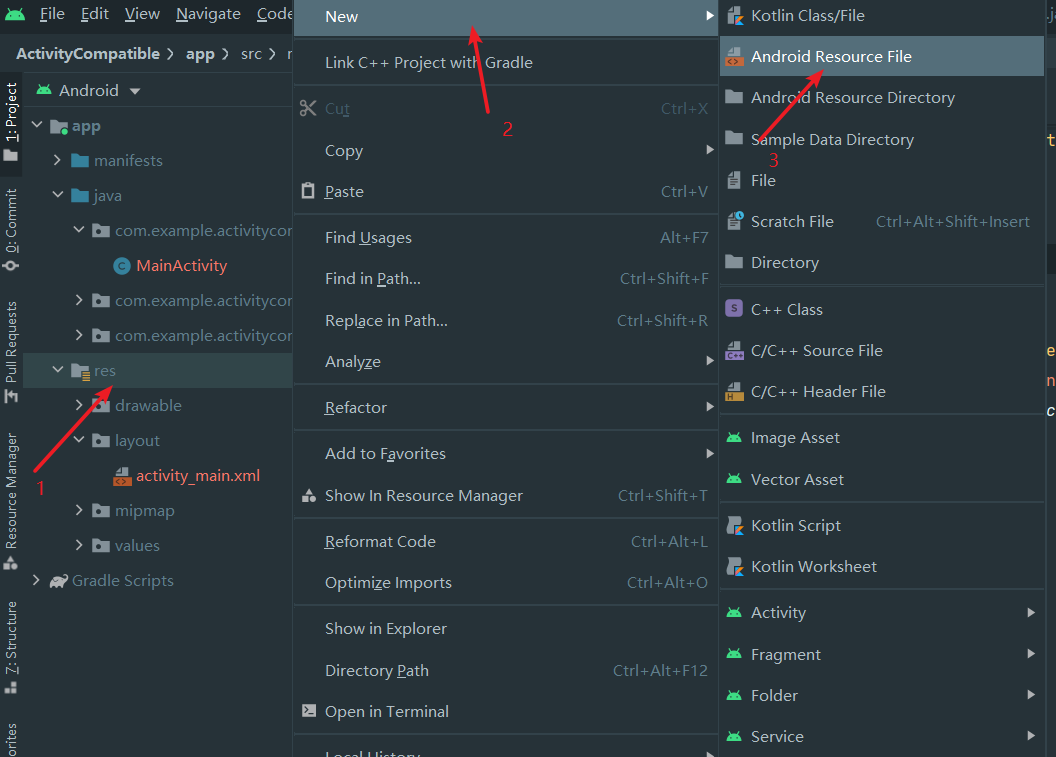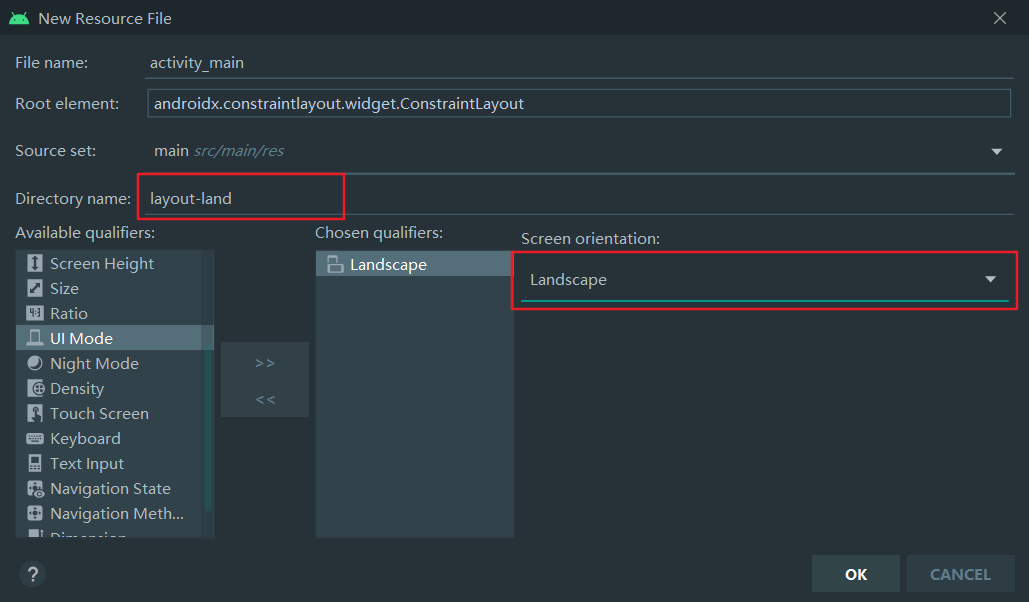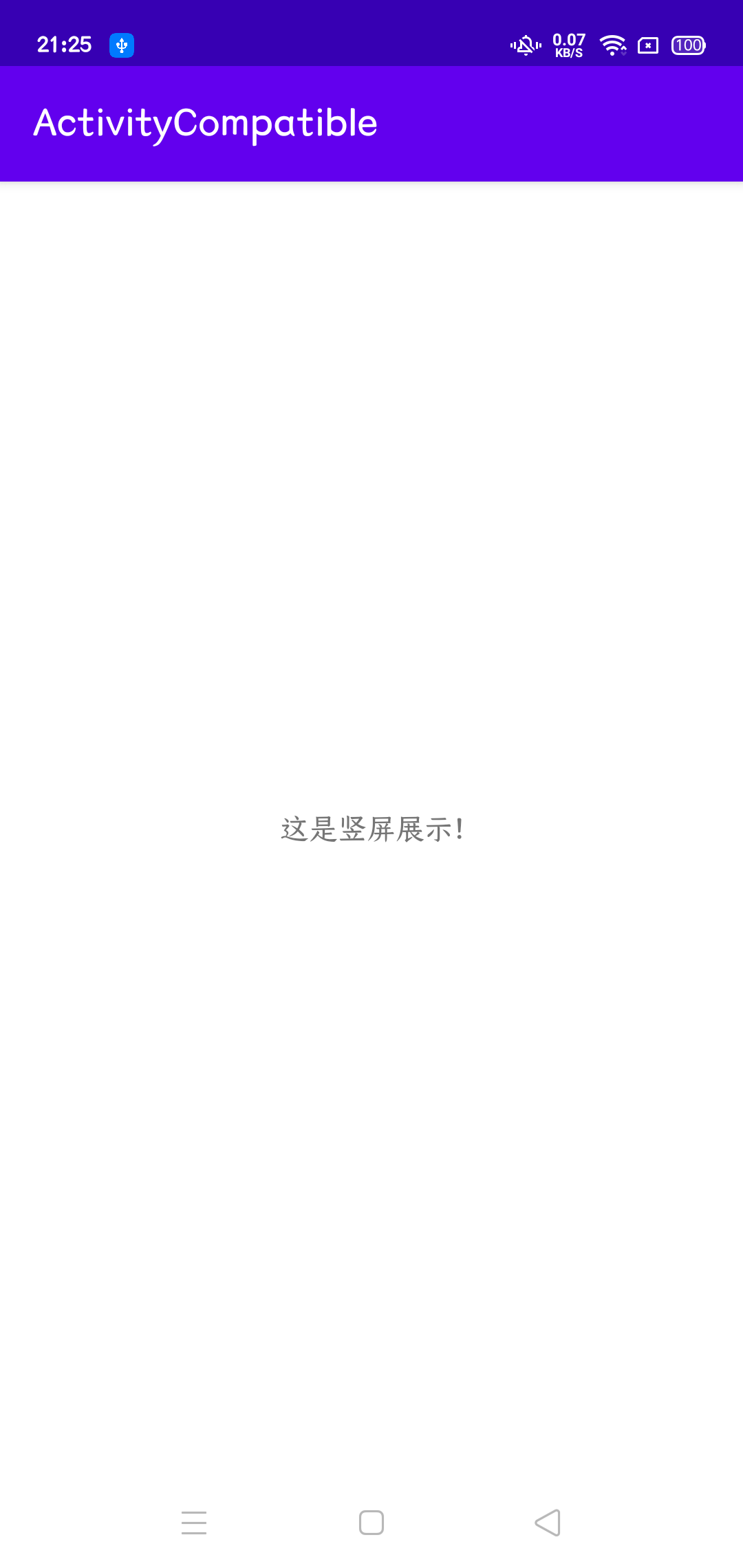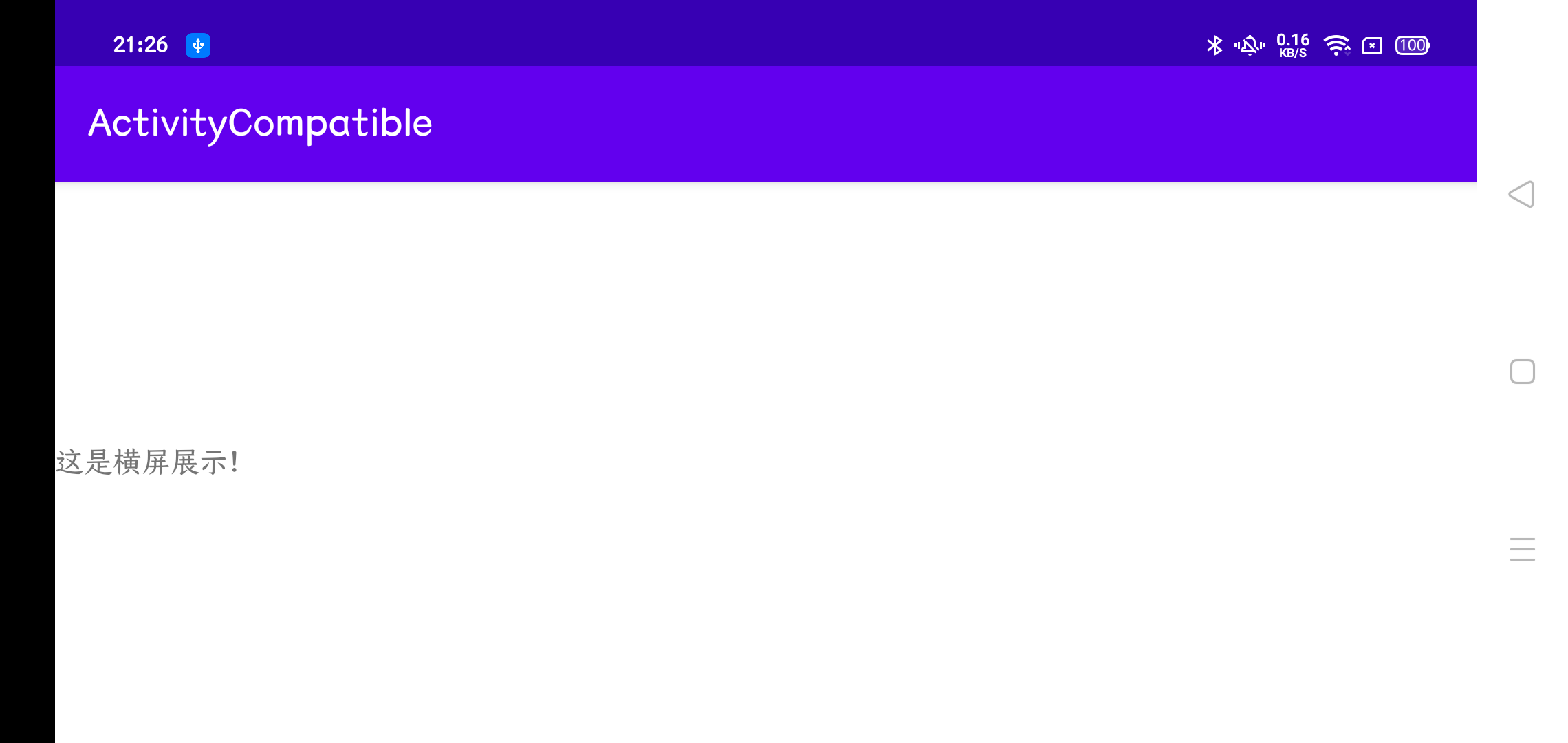Android的设备配置和配置修饰符
介绍
设备配置是一系列特征组合,用来描述设备当前状态。这些特征有:屏幕方向、屏幕像素密度、屏幕尺寸、键盘类型、底座模式以及语言等。 通常,为匹配不同的设备配置,应用会提供不同的备选资源。比如:为适应不同分辨率的屏幕,向项目添加多套标就是这样一个使用案例。 可以说这些各种各样的配置只是为了兼容各种各种乱七八糟的设备
旋转屏幕
设备的屏幕像素密度是个固定的设备配置,无法在运行时发生改变。然而,屏幕方向等特征可以在应用运行时改变。 在运行时配置变更(runtime configuration change)发生时,可能会有更合适的资源来匹配新 的设备配置。于是,Android回销毁当前activity,为新配置寻找最佳资源,然后创建新实例使用这些资源。
创建一个Activitycompatible的项目,MainActivity保持默认
在activity_main.xml中写入下列代码
1
2
3
4
5
6
7
8
9
10
11
12
13
14
15
16
17
18
| <?xml version="1.0" encoding="utf-8"?>
<androidx.constraintlayout.widget.ConstraintLayout xmlns:android="http://schemas.android.com/apk/res/android"
xmlns:app="http://schemas.android.com/apk/res-auto"
xmlns:tools="http://schemas.android.com/tools"
android:layout_width="match_parent"
android:layout_height="match_parent"
tools:context=".MainActivity">
<TextView
android:layout_width="wrap_content"
android:layout_height="wrap_content"
android:text="这是竖屏展示!"
app:layout_constraintBottom_toBottomOf="parent"
app:layout_constraintLeft_toLeftOf="parent"
app:layout_constraintRight_toRightOf="parent"
app:layout_constraintTop_toTopOf="parent" />
</androidx.constraintlayout.widget.ConstraintLayout>
|
接着我们创建建水平模式布局,在项目工具窗口中,右键单击res目录后选择New → Android resource directory菜单项。创建资源目录界面列出了资源类型及其对应的资源特征,如图所示。

从资源类型(Resource type) 列表中选择layout,保持Source set的main选项不变。
接下来选中待选资源特征列表中的Orientation,然后单击>>按钮将其移动至已选资源特征 (Chosen qualifiers)区域。 最后,确认选中Screen orientation下拉列表中的Landscape选项,并确保目录名(Directory name)显示为layout-land,如图所示。
这个窗口看起来有模有样,但实际用途仅限于设置目录名。点击OK按钮让Android Studio创建res/layout-land。 这里的-land后缀名是配置修饰符的一个使用例子。Android依靠res子目录的配置修饰符定位最佳资源以匹配当前设备配置。


我们将layout-land中的activity_main.xml写入以下内容
1
2
3
4
5
6
7
8
9
10
11
12
13
14
15
16
17
| <?xml version="1.0" encoding="utf-8"?>
<androidx.constraintlayout.widget.ConstraintLayout xmlns:android="http://schemas.android.com/apk/res/android"
xmlns:app="http://schemas.android.com/apk/res-auto"
xmlns:tools="http://schemas.android.com/tools"
android:layout_width="match_parent"
android:layout_height="match_parent">
<TextView
android:layout_width="0dp"
android:layout_height="wrap_content"
android:text="这是横屏展示!"
app:layout_constraintBottom_toBottomOf="parent"
app:layout_constraintLeft_toLeftOf="parent"
app:layout_constraintRight_toRightOf="parent"
app:layout_constraintStart_toStartOf="parent"
app:layout_constraintTop_toTopOf="parent" />
</androidx.constraintlayout.widget.ConstraintLayout>
|
运行程序,竖屏时结果如下(这个截图是使用Android studio截图的,有点长)

我们再进行横屏,结果如下(吐槽一下,这个黑屏部分时刘海屏)

可以看到这两个界面使用的layput文件是不相同的,通过不同目录名或者叫修饰符由系统进行选择




